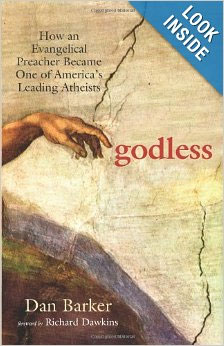 |
Godless: How an Evangelical Preacher Became One of America's Leading Atheists |
For 19 years, Dan Barker lived as a missionary, an evangelist and a Christian songwriter. Decades after, he became one of the most prominent advocates of atheism and free-thought. This book is, in his own words, Dan Barker’s journey from fundamentalism to atheism.
Christopher Hitchens, who was a notable author and journalist, believes that Barker's book is a classic example of how reflections of intelligent and ethical people who chose to stick with logic could conquer bigotry and superstition. Richard Dawkins was also quoted as saying that Barker's account of internal delusion is eloquent, adding that the author is one smiling and triumphant refugee from the crazy and bizarre world of fundamentalist Protestantism in America.
Subscription Note:
Choosing to subscribe to this topic will automatically register you for email notifications for comments and updates on this thread.
Email notifications will be sent out daily by default unless specified otherwise on your account which you can edit by going to your userpage here and clicking on the subscriptions tab.



































